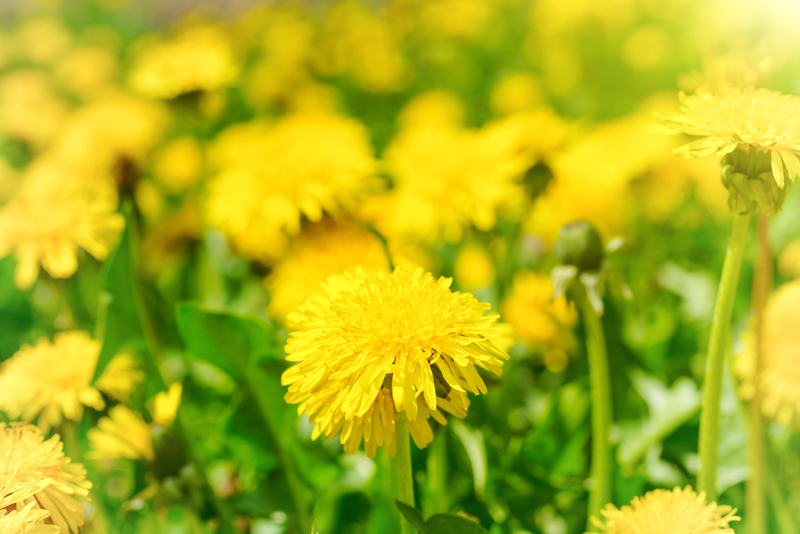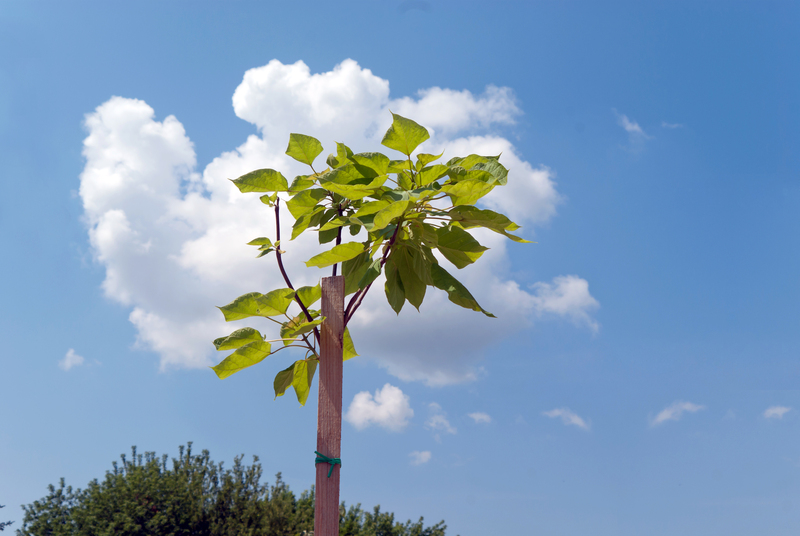Understanding Orchid Care Basics
Posted on 15/09/2025
Understanding Orchid Care Basics: A Comprehensive Guide
Orchids are among the most exquisite and diverse houseplants, fascinating enthusiasts with their vibrant blooms and captivating beauty. Understanding orchid care basics is essential for cultivating these stunning plants successfully at home. Whether you are a novice grower or an experienced horticulturist, this guide delivers all the essential information for maintaining healthy and thriving orchids. From their unique requirements to troubleshooting common issues, let's delve into the world of orchid maintenance and unlock the secrets to nurturing these remarkable flowers.

What Makes Orchids Unique?
The Orchidaceae family, known simply as orchids, is one of the largest and most diverse plant families globally. With over 25,000 naturally occurring species and more than 100,000 hybrids, these plants have adapted to various environments, from rainforests to mountains. Their unique structures, such as specialized roots and striking blooms, set them apart from other houseplants. Understanding the basics of orchid care begins with an appreciation for their biological diversity and specific needs.
Key Orchid Characteristics
- Epiphytic roots: Many orchids grow on trees and absorb moisture from the air.
- Long-lasting blooms: Their flowers can last weeks or even months.
- Adaptability: Orchids can thrive indoors if their requirements are met.
The Essential Elements of Orchid Care
1. Light Requirements for Orchids
Proper lighting is crucial for the growth and flowering of orchids. Most popular varieties, such as Phalaenopsis (moth orchids), require bright but indirect sunlight. Direct sunlight can cause leaf burn, while too little light hampers bloom production. The optimal solution is filtered or diffused light near an east- or west-facing window.
- Place orchids behind sheer curtains to protect them from harsh rays.
- If natural light is insufficient, supplement with fluorescent or LED grow lights approximately 12-18 inches from the plant.
*Tip:* If your orchid's leaves turn dark green, they might need more light. Reddish or yellowish leaves often indicate too much sunlight.
2. Watering Orchids: Getting It Just Right
Understanding how to water orchids is vital due to their unique root structures. Unlike traditional houseplants, orchids do not like consistently moist soil. Overwatering is the most common cause of orchid death, as their roots are highly sensitive to rot.
How Often Should You Water Orchids?- For most indoor orchids, water every 5 to 12 days, depending on the variety and environment.
- Check the potting medium--water only when it is almost dry.
- Use tepid, non-chlorinated water for the best results.
- Water early in the day, allowing leaves to dry before nighttime.
- Direct water onto the roots, not the leaves or crown, to prevent rot.
- Let excess water drain fully; never let orchids sit in pooled water.
*Tip:* Many experts recommend the "soak and dry" method. Submerge the potting medium briefly, then let it drain thoroughly.
3. Humidity and Air Circulation
Orchids hail from humid environments, so maintaining adequate humidity is crucial. Orchid care basics dictate that levels between 40% and 70% humidity are ideal, especially during the plant's active growing season.
- Group plants together to create a more humid microclimate.
- Use a humidity tray filled with water and pebbles beneath the orchid's pot.
- Mist lightly with distilled water in the mornings if the air is dry.
Equally important is air circulation. Stagnant air can encourage diseases. Ensure gentle airflow using a small fan nearby or by leaving a window ajar.
4. The Best Temperature Range for Orchids
Temperature preferences can vary among orchid species, but most household orchids prefer daytime temperatures of 65-80?F (18-27?C) and nighttime temperatures between 55-65?F (13-18?C).
- Avoid cold drafts and sudden temperature fluctuations.
- Warmer temperatures during the day and cooler nights encourage flowering.
*Tip:* Phalaenopsis orchids and other popular hybrids thrive on this temperature swing, which mimics their natural rainforest habitats.
5. Potting Media and Containers
Traditional potting soil is unsuitable for orchids. Instead, they require a specialized potting medium that promotes drainage and aeration around their roots.
- Bark mix: Commonly used for epiphytic orchids (e.g., Phalaenopsis, Cattleya).
- Sphagnum moss: Retains moisture; good for young or moisture-loving orchids.
- Mixes: Many growers use blends of bark, moss, perlite, and charcoal.
*Use orchid pots with drainage holes. Clear plastic pots help monitor root health and moisture levels.*
6. Fertilizing Orchids Properly
Orchids have relatively low fertilizer needs. Overfeeding can damage their delicate roots. For optimal growth, use a dilute, balanced fertilizer formulated specifically for orchids.
- Apply fertilizer at half or quarter strength every 2 to 4 weeks during active growth.
- Flush the potting medium with plain water monthly to prevent salt buildup.
- Reduce or stop feeding during dormant periods (usually after flowering and in winter).
Common Orchid Varieties for Home Growers
Certain orchids are particularly well-suited to beginner care. Understanding the basics of these popular varieties can ensure a successful and rewarding orchid-raising experience.
Phalaenopsis (Moth Orchid)
- Tolerates household conditions well.
- Blooms last up to three months.
Cattleya
- Known for large, fragrant flowers.
- Prefers brighter light than some other orchids.
Dendrobium
- Produces sprays of blossoms on tall canes.
- Needs a distinct dry rest period after flowering.
Oncidium (Dancing Lady Orchid)
- Thrives in slightly cooler, brighter locations.
- Charming clustered blooms.
Key Challenges and Orchid Troubleshooting Tips
1. Orchid Leaves Turning Yellow
One of the most common concerns for new growers is yellowing leaves. This symptom can indicate a range of issues:
- Overwatering: Roots may be rotting; check the medium and reduce watering frequency.
- Underwatering: Leaves may appear wrinkled in addition to yellowing.
- Sunburn: Yellow patches, typically on the leaf tips or edges, signal too much sunlight exposure.
- Nutrient deficiency: Rare, but possible with inadequate fertilization.
2. Orchid Not Blooming
A healthy orchid may refuse to bloom if one or more of its needs aren't met:
- Insufficient light - increase exposure to bright, filtered sunlight.
- Incorrect temperature cycles - try to replicate natural day-night cooling.
- Excess nitrogen - high nitrogen levels promote leaf growth at the expense of blooms.
- Repotting at the wrong time - only repot after blooming or during active growth.
3. Root Rot in Orchids
*Root rot* is almost always caused by overwatering or poor drainage. Signs include soft, mushy roots and wilting leaves. To remediate:
- Remove the orchid from its pot and trim away all rotted roots.
- Repot in fresh, sterile orchid mix.
- Water less frequently and ensure proper drainage.
Orchid Care Throughout the Year
Spring and Summer: Growth Season
- Increase watering and feeding as orchids enter vigorous growth.
- Monitor for pests like aphids, mealybugs, and scale insects.
- Encourage air circulation to prevent fungal diseases.
Autumn: Preparing for Dormancy
- Many varieties begin to slow down their growth.
- Reduce watering and fertilization frequency.
Winter: Dormant Period
- Some orchids require cooler nights to initiate blooming.
- Keep light levels steady but avoid overwatering.
Repotting Orchids: When and How
*Orchids generally need repotting every 1 to 3 years*, when the potting mix breaks down or roots overgrow the container. The best time is just after flowering or during new root growth.
Steps to Repot an Orchid:- Gently remove the orchid from its pot.
- Trim dead or rotted roots with sterile scissors.
- Place the plant in a new container with fresh orchid potting mix.
- Water lightly and provide bright, indirect light to minimize transplant shock.
Advanced Orchid Care Tips
1. Maintain Cleanliness:Regularly sterilize pots, tools, and hands to prevent the spread of diseases and pests.
2. Monitor for Pests and Diseases:Early detection of mealybugs, aphids, and fungal issues makes treatment more effective. Wipe leaves with a damp cloth and use insecticidal soap if needed.
3. Learn Your Orchid Species:Different species may have unique requirements. Refer to care tags and resources for the specific needs of your orchid variety.

Frequently Asked Questions about Orchid Care Basics
How long do orchids live?
With proper orchid care, many household orchids can live indefinitely, producing beautiful blooms year after year.
Can I grow orchids outdoors?
In tropical or subtropical climates, certain species can be grown outside. Most commonly, however, indoor orchid care basics apply for temperate regions.
How do I make my orchid rebloom?
To encourage reblooming, ensure proper light, mimic natural temperature fluctuations, and maintain a steady watering and fertilization schedule.
Conclusion: The Joy of Growing Orchids
Mastering the basics of orchid care is both a science and an art. By understanding their unique needs for light, water, humidity, temperature, and nutrition, you can successfully grow breathtaking orchids in your home. Whether you are nurturing a Phalaenopsis or experimenting with exotic hybrids, patience and observation are key. As you gain confidence, you'll soon be rewarded with spectacular blooms and a deeper appreciation for these enchanting plants.
Ready to embark on your orchid-growing journey? Bookmark this guide for reference, and let your passion for these remarkable flowers flourish! For more in-depth orchid care tips and community support, consider joining local societies or online orchid forums. Happy growing!

